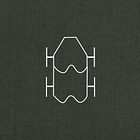This post continues a five part series. You can find the first post at the far end of this link.
The headquarters (Stab) of the motorcycle infantry battalion did not qualify for the status of a company. Nonetheless, it weighed in at twelve motorcycles (four of which sported side cars), twenty-four soft-skinned four-wheelers, and two armored cars.
The Maintenance Group
Of the vehicles of the battalion headquarters, the largest number (one staff car, one cycle-with-sidecar, five cargo trucks, and a car configured as a mobile workshop) served in the maintenance group (Instandsetzungsgruppe).
The staff car seems to have carried the senior specialists - a master armorer and master mechanic - who supervised the care and repair of weapons and vehicles. The motorcycle may have delivered the mechanical analog of ‘first aid’ to a troubled piece of gear. It may also have provided the battalion engineer with a means of scouting for suitable locations for battalion maintenance areas.
Of the five cargo trucks - the stylized ‘L’ on the icons seems to stand for Lastkraftwagen - two carried spare parts for vehicles, one carried fuel, one carried an armorer’s workshop and (marvelous to say) medical supplies, and the last carried shovels, picks, and other pioneer tools. The maintenance car - which was the only vehicle in the battalion that bore a model designator (Instandsetzungskraftwagen 2/40) rather than a generic description - allowed mechanics to perform simple repairs without pitching a tent or converting a building into workshop.
The Communications Echelon
The communications echelon (Nachrichtenstaffel) rated a staff car, two trucks for telephone teams (Fernsprechtrupps), two trucks for back-pack radio teams (Tornisterfunktrupps), and two antennae-rich armored cars (Panzerfunkwagen). It was thus one of the two elements of the battalion that was entirely bereft of motorcycles. (The other could be found in the machine gun company.)
The ‘N’ on the vehicles that carried the telephonists seems to have stood for Nachrichten (‘communications’). (This may have reflected the generic character of the car. It may also have been chosen to prevent confusion between the prefixes for telephone (Fernsprech-) and radio (Funk-).
The Leadership Group
The two staff cars of the leadership group seem to have been militarized passenger cards (Kubelwagen) of the amphibious persuasion (Schwimmwagen).
Two of the three two-seat motorcycles may have served as an alternative mounts for the battalion commander and his ordinance officer. (Not to be confused with a cosmoline-covered, metal-minded ordnance officer, an Ordinanzoffizer served as an empowered messenger who, in moments of crisis, was expected to take charge of elements in need of direction.) The third served as transport for the tripod-mounted periscope binoculars (Scherenfernrohr) that played such a big role in German command posts.
The Combat Trains
One of men of the combat trains (Gefechtstross) rode a motorcycle. The rest rode cargo trucks. Of the latter, one served as an ambulance, one carried the field kitchen that fed the men of the battalion headquarters.
The Subsistence Trains
The little convoy that delivered foodstuffs to the company field kitchens (Verflegungstross) rated a staff car, a single-seat motorcycle and three cargo trucks.
The Baggage Trains
The element that carried baggage (which, I presume, included things like tents and camp equipment) also rated a staff car and a one-man motorcycle. However, rather than enjoying the services of three cargo trucks, it made do with two.
The sources for all five installments of this series can be found in the first post.














